Key takeaways:
- Progressive enhancement prioritizes essential content and functionality for all users, ensuring accessibility regardless of technology.
- This approach encourages continuous improvement and future-proofing by adapting to evolving technology trends.
- Key principles include separating content from presentation and extensive testing across different browsers and devices.
- Adopting progressive enhancement enhances website accessibility, increases user engagement, and can lead to improved SEO outcomes.
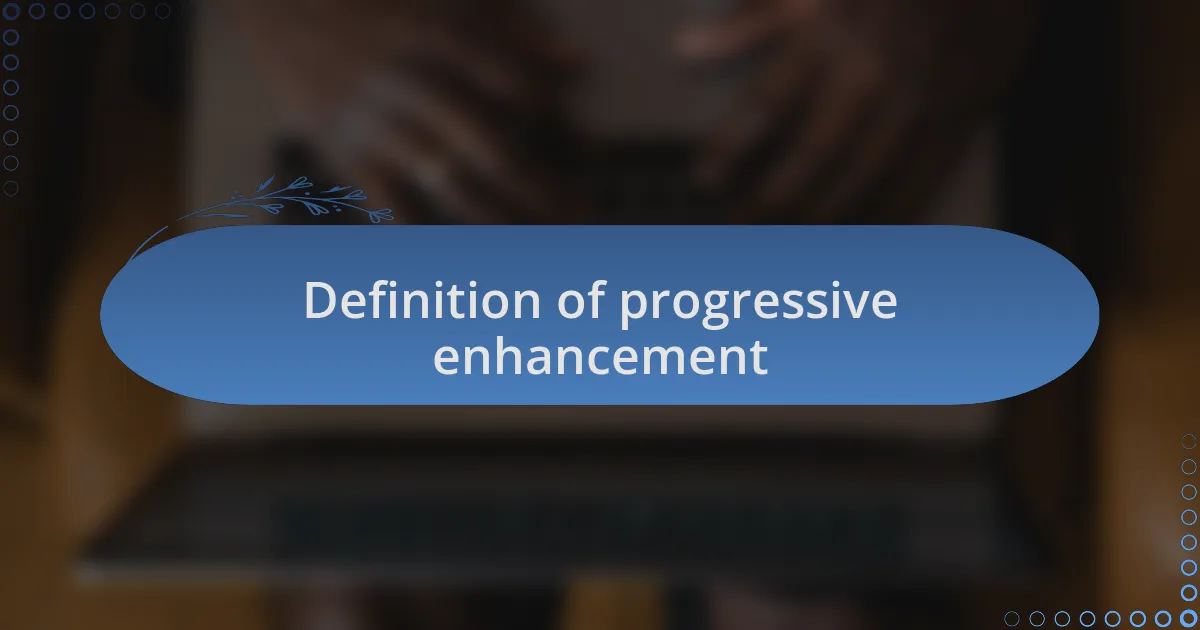
Definition of progressive enhancement
Progressive enhancement is a web design strategy aimed at providing a basic level of user experience to all users while allowing those with better browser technology to access enhanced features. I remember when I first encountered this concept during a project where we aimed to reach as many users as possible, regardless of their technology. It was eye-opening to realize how vital it is to design for all users, not just the ones with the latest devices.
At its core, progressive enhancement is about building a website that offers essential content first, while layering on more advanced features for those who can handle it. One project I worked on involved creating an educational platform; we prioritized text-based content, ensuring students with slower connections could still engage meaningfully. Have you ever thought about how frustrating it can be to land on a flashy site that just doesn’t load? That’s why progressive enhancement resonates with me—it keeps the focus on accessibility and usability while still embracing innovation.
In essence, you start with a solid foundation that everyone can use, then progressively enhance the experience for those with more advanced capabilities. I often reflect on how this approach aligns with a broader philosophy of inclusivity. Isn’t it rewarding to create something that can adapt and serve users well, no matter their circumstances? By adopting progressive enhancement, I believe we can craft websites that not only look good but truly work for everyone.
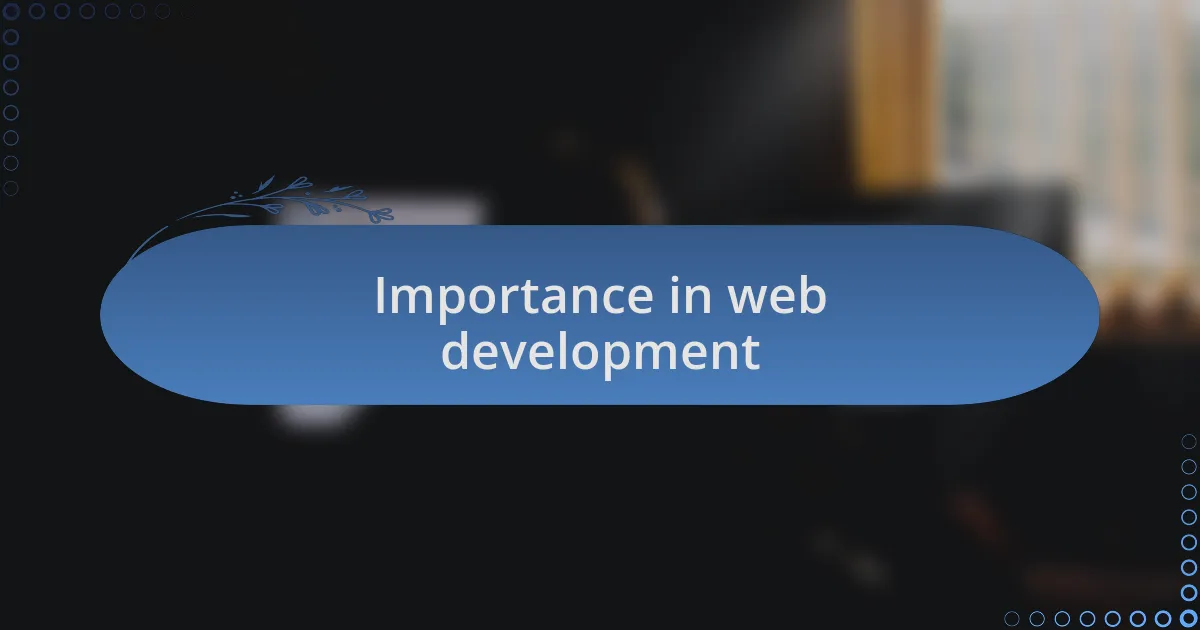
Importance in web development
Progressive enhancement plays a crucial role in web development by ensuring that all users receive a functional experience, regardless of their device or browser capabilities. I remember developing a site for a community organization and realized the diverse range of technology our audience used. By prioritizing basic functions, I could cater to everyone, which ultimately led to wider engagement—a win-win for both the users and the organization.
The focus on progressive enhancement also nurtures a mindset of continuous improvement. During one project, our team implemented regular updates to enhance features while maintaining the site’s core functionality. It was rewarding to see users with older devices still able to access essential information, while others enjoyed richer multimedia experiences. This balance prevented anyone from feeling left out; can you imagine how that impacts user loyalty?
Moreover, adopting this approach allows for better future-proofing of web projects. I often think about how quickly technology evolves and how websites can easily fall out of touch. When I proactively build with progressive enhancement in mind, I know I’m not just responding to current trends; I’m laying down a resilient foundation that will adapt to future needs. That’s the kind of web development that excites me—the kind that embraces change while still being dependable for users today.
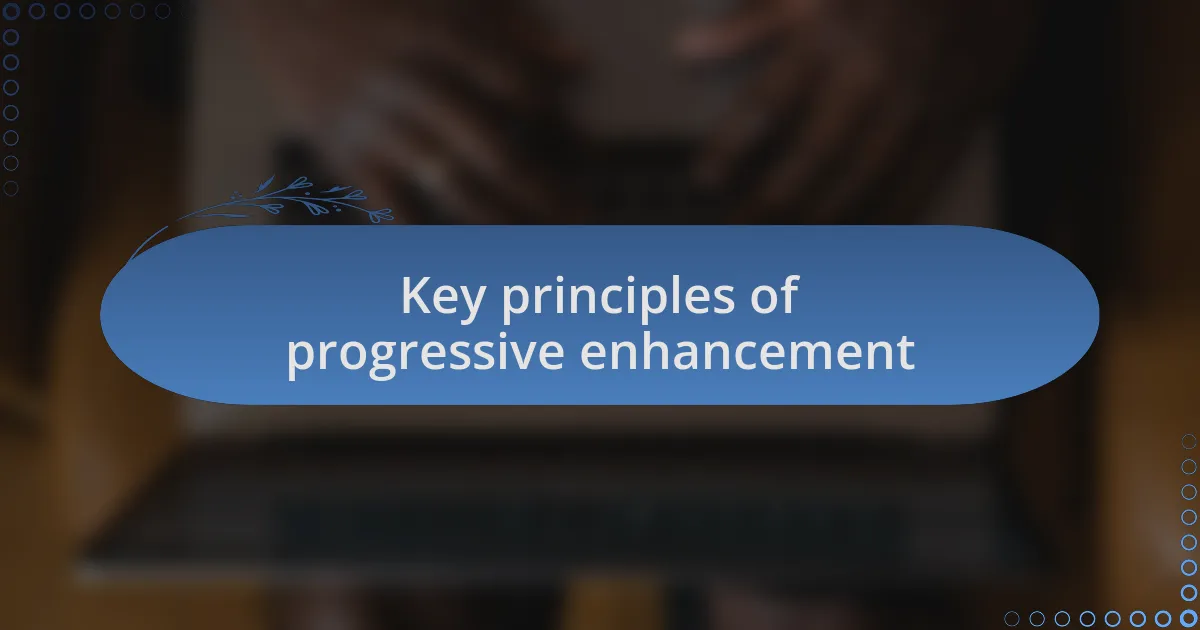
Key principles of progressive enhancement
Progressive enhancement revolves around the principle that a website should first offer a solid, accessible base of content, which can then be enhanced with advanced features for those with more capable devices and browsers. I recall a project where we launched a simple travel information site, ensuring that even users with disabled JavaScript could access essential information. It was gratifying to hear from users who relied on older devices—they felt included in the travel community, just like everyone else exploring our richer interactive features.
Another key principle is to separate content from presentation, which allows developers to focus on the user experience without being hindered by design constraints. When I worked on a blog redesign, I approached the content and styling as two distinct entities. This separation made it easier to implement responsive design techniques later on, ensuring that users on mobile devices didn’t miss out on the information, even if it was laid out differently. Isn’t it fascinating how this layer of flexibility can truly enhance the user experience?
Lastly, testing across various browsers and devices is fundamental to progressive enhancement. I remember the tense moments during a project launch when I realized our web app was performing differently in different browsers. By prioritizing testing early in the development process, I not only improved user experience but also ensured that the project received positive feedback from users. It reinforced my belief: if you prioritize foundational access, you open doors for creativity and engagement that might have otherwise been overlooked.
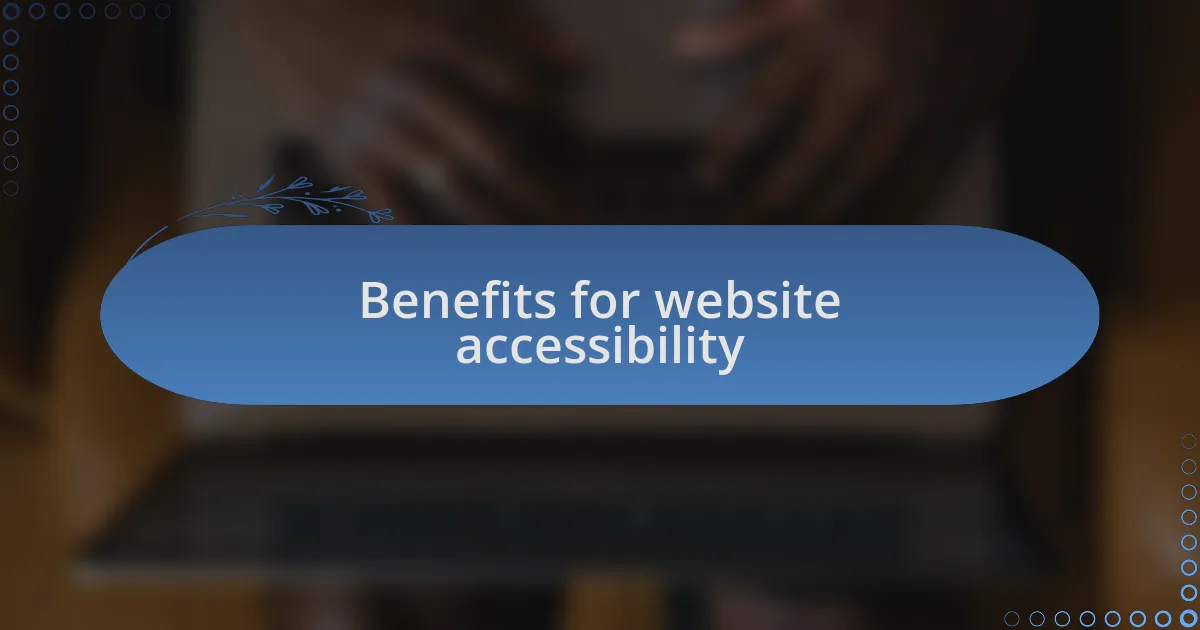
Benefits for website accessibility
Ensuring website accessibility through progressive enhancement not only widens your audience but also fosters a sense of inclusion. I remember a time when a client expressed concern about how certain users might struggle to enjoy their site’s features. By implementing progressive enhancement, we surprised them with feedback from visitors who appreciated being able to navigate and interact with the site easily, even with basic browser versions. It underscored for me just how crucial it is that everyone, regardless of ability or technology, feels welcomed online.
Moreover, by streamlining the initial experience, you create a smoother transition to enhanced features. During a project where I revamped an educational platform, I utilized this philosophy effectively. Users who had slower internet connections were still able to access core materials without frustration, while those with higher bandwidth enjoyed rich multimedia content. The contrast was rewarding—seeing students engage with the same material under different circumstances made the whole project feel meaningful. Isn’t it inspiring to think about how an extra effort for inclusivity can pay off in tangible engagement?
Let’s not forget that accessibility can often lead to improved SEO as well. For one project, I implemented semantic HTML to ensure every user could easily navigate. This not only enhanced the experience for users with disabilities but also improved the site’s visibility in search engines. It’s a win-win! Isn’t it satisfying when choices made for accessibility create ripples that benefit the entire site?
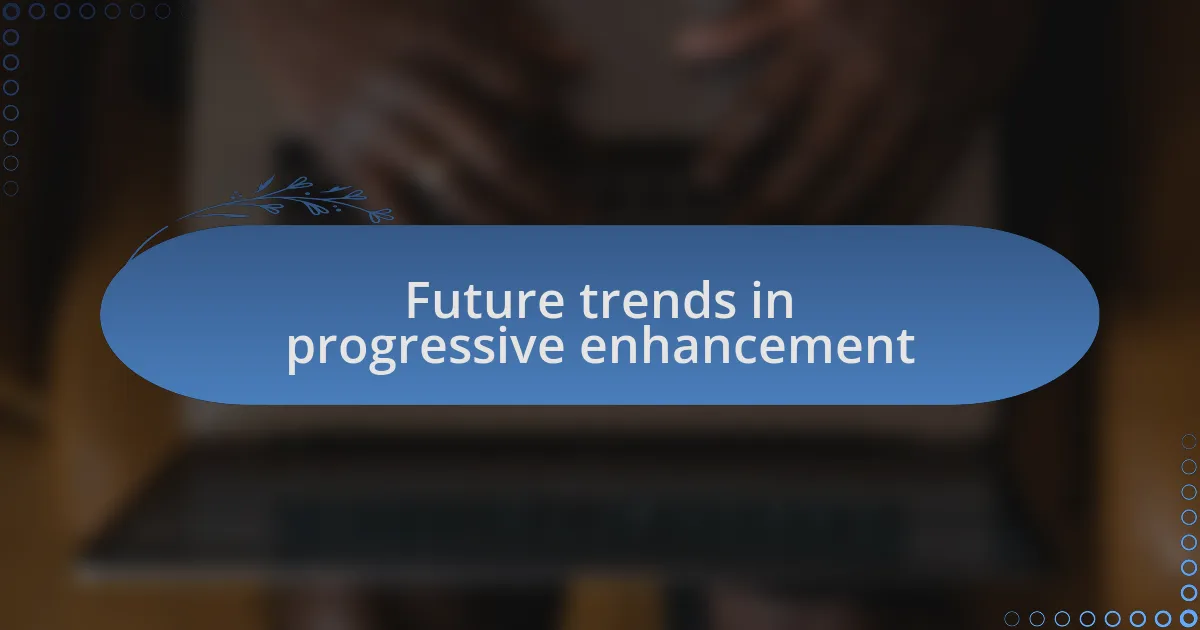
Future trends in progressive enhancement
As I look ahead, I’m genuinely excited about how progressive enhancement will evolve, particularly with the rise of artificial intelligence in web design. Imagine creating adaptive experiences that cater to the user’s context in real-time. In a recent project, I experimented with AI-driven suggestions that dynamically adjusted content based on user behavior, making the website not just responsive but also personalized. Isn’t it fascinating to think about how technology can craft experiences that feel tailored to each individual?
Another trend I foresee is the continued emphasis on performance optimization in progressive enhancement. A few months back, I optimized a client’s site for speed without compromising quality, ensuring users on older devices had a seamless experience. Reducing load times and enhancing user satisfaction as a result was an eye-opener. How empowering is it that we can take charge of the user experience by prioritizing speed?
Finally, the integration of web standards like HTTP/3 will play a crucial role in the future of progressive enhancement. I recall a time when I transitioned a site to use HTTP/2, which drastically improved loading speeds and multitasking for users. With HTTP/3 promising even better performance, I can hardly wait to explore its potential for making websites smoother and more accessible. It really makes you wonder: how far can we push the boundaries of web development with these emerging technologies?